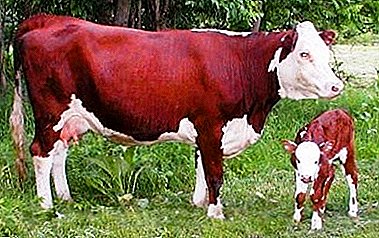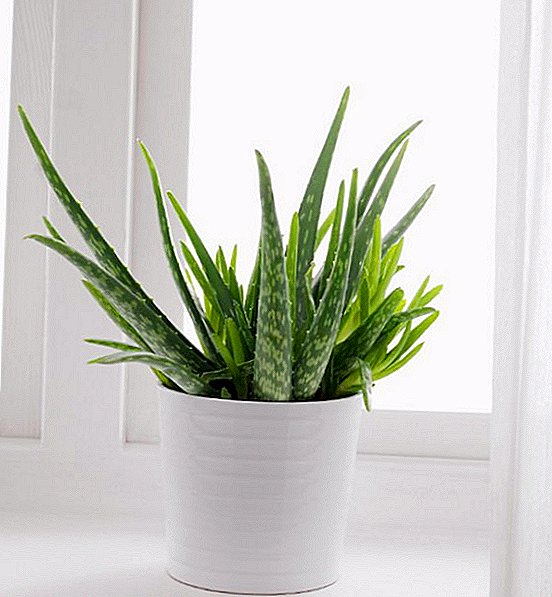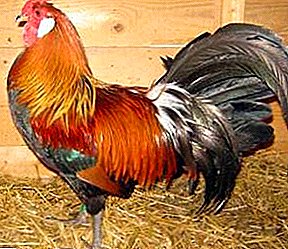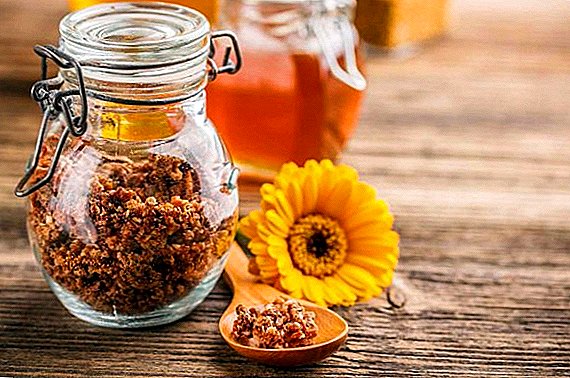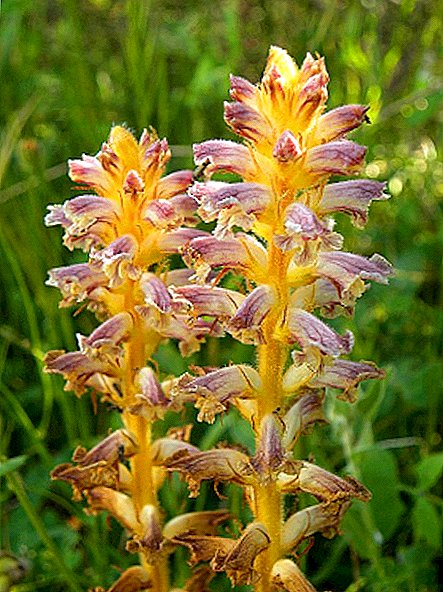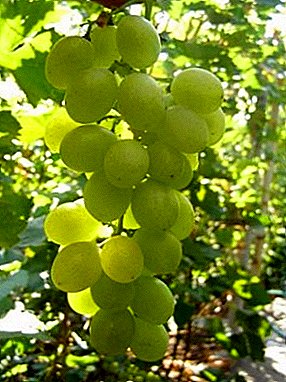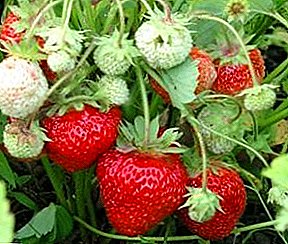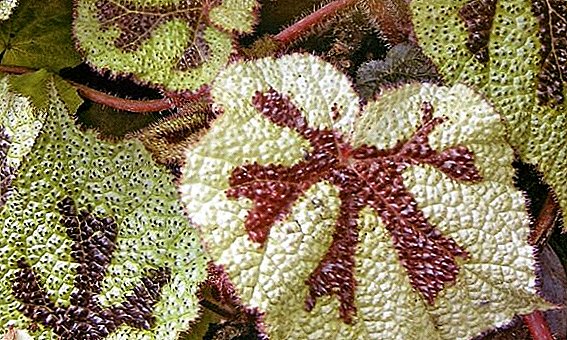 Mason's Begonia, also known as the "Maltese Cross" and "Deer Horns", is distinguished by extremely spectacular foliage and at the same time faded and useless flowering.
Mason's Begonia, also known as the "Maltese Cross" and "Deer Horns", is distinguished by extremely spectacular foliage and at the same time faded and useless flowering.
Read more about this original indoor plant later in the article.
Description of indoor plants
This home-cultivated herbaceous perennial plant cannot be confused with any other thanks to its impressive leaves with a pattern in the form of a five-lobed cross, somewhat reminiscent of a stylized Maltese cross. The leaves themselves are capable of reaching a length of up to 0.2 m, have an asymmetrical shape in the form of a heart, are colored in yellowish or green tones, have a bumpy surface dotted with many small hairs.  With age, the leaves acquire a pronounced silvery shade. The very same pattern on the leaves is sustained in dark green or dark brown tones. Sheet mass forms a shrub with a maximum height of 0.3 m and has a tuberous root system. Twice a year in spring and summer small greenish flowers appear in the plant, gathered in panicles. These flowers do not represent any decorative value and look miserable against the background of luxurious foliage. Moreover, they still do not give seeds, that is, they are also devoid of practical value. Mason's begonia lives at home on average up to 20 years, but in favorable conditions it can live for a quarter of a century.
With age, the leaves acquire a pronounced silvery shade. The very same pattern on the leaves is sustained in dark green or dark brown tones. Sheet mass forms a shrub with a maximum height of 0.3 m and has a tuberous root system. Twice a year in spring and summer small greenish flowers appear in the plant, gathered in panicles. These flowers do not represent any decorative value and look miserable against the background of luxurious foliage. Moreover, they still do not give seeds, that is, they are also devoid of practical value. Mason's begonia lives at home on average up to 20 years, but in favorable conditions it can live for a quarter of a century.
Did you know? In addition to its external beauty, begonia also has internal virtues that help it purify indoor air from harmful substances and microbes.
Optimal conditions for growing at home
This flower does not belong to the too whimsical species of domestic plants, however, it requires some effort from the gardeners when growing it.
Location and lighting
Best of all, this begonia feels itself on the windowsills facing south-west or southeast, on which there is a powerful but diffused lighting. Direct sunlight does not like this plant. At the same time, it is not well tolerated and low light, at which its leaves lose their brightness and expressiveness. With a lack of light, Begonia Mason responds well to artificial lighting. 
Temperature conditions
The most favorable temperature for comfortable existence of the described plant is in the range of + 18 ... + 25 ° С. In winter, during a period of rest for a flower, the temperature can be slightly reduced, but it should be remembered that it reacts extremely negatively to temperature drops, and temperatures below + 15 ° C can be destructive for it. Drafts are also contraindicated for Mason's begonias.
Air humidity
This plant is sensitive to ambient air humidity, which should not be below 70%. To ensure a humid atmosphere in the room, it is recommended to use humidifiers, and also to place the flowerpot in wet pebbles or expanded clay.
Important! In order to improve the moisture regime, in no case should the begonia be sprayed with water, as this can cause putrefactive processes and powdery mildew.
Home care
In addition to conventional irrigation, fertilizing and trimming, some actions related to the winter period in the life of the plant are also included in the care of Mason's begonia. If the leaves start to dry up in the fall, it means that it is preparing for the winter dormancy period. By this signal it is necessary to stop fertilizing with fertilizers, reduce the irrigation intensity and increase the level of air humidity.  It is useful during this period to arrange begonias greenhouse conditions, covering the plant with a transparent film. The dormant period can last as long as half a month, and can take up to 2 months, after which the plant begins to wake up, releasing new shoots. After that, the cover must be removed.
It is useful during this period to arrange begonias greenhouse conditions, covering the plant with a transparent film. The dormant period can last as long as half a month, and can take up to 2 months, after which the plant begins to wake up, releasing new shoots. After that, the cover must be removed.
Check out the most popular types of home begonias.
Top dressing
Begonia should be fed monthly, except during the dormant period, using fertilizers designed specifically for begonias. But it should be borne in mind that since the flowers on this plant are of no value, and its original leaves play the main role in it, nitrogen should prevail in the fertilizers, stimulating the growth of the green mass. Fertilizing should necessarily be mated with pre-irrigation, so as not to burn the sensitive root system of the flower.
Watering features
During the growing season, the frequency of watering should be on average 2 times a week. Humidity and room temperature can make their adjustments to the intensity of irrigation, so you need to monitor the condition of the upper layer of the substrate, which should be slightly dried before irrigation. This is explained by the fact that begonia, no less than drought, does not tolerate excess moisture in the soil.
Important! In no case should the water in the pan under the pot with begonia should accumulate and stagnate.
How to properly trim and transplant
Usually, begonia is pruned in October before it leaves during the winter dormancy, removing dried and damaged leaves. In addition, the mason begonia is often subjected to specific pruning of flowering shoots. Flowers that do not represent either decorative or practical value, are an unnecessary load for the plant and significantly accelerate its aging. Pruning is also carried out before transplanting the bush into a new, more spacious, pot.  This operation is carried out annually or 1 time in 2 years in the spring, in the period between winter dormancy and the beginning of the active growing season, and is accompanied by the preliminary pruning of excess leaves. Then the earth lump is removed from the pot, the ground is carefully removed from the root system, which is then placed in a new pot. Preliminarily, a drainage layer of fine pebbles, crushed bricks or expanded clay is laid at the bottom of a new and simpler tank. The roots of the transplanted begonia are filled with a substrate that is not packed in to provide better access of oxygen to the roots. After that, the transplanted bush is watered, and the excess water is immediately removed from the pan.
This operation is carried out annually or 1 time in 2 years in the spring, in the period between winter dormancy and the beginning of the active growing season, and is accompanied by the preliminary pruning of excess leaves. Then the earth lump is removed from the pot, the ground is carefully removed from the root system, which is then placed in a new pot. Preliminarily, a drainage layer of fine pebbles, crushed bricks or expanded clay is laid at the bottom of a new and simpler tank. The roots of the transplanted begonia are filled with a substrate that is not packed in to provide better access of oxygen to the roots. After that, the transplanted bush is watered, and the excess water is immediately removed from the pan.
Breeding methods
The absence of seeds in this type of begonia allows breeding this flower only by the vegetative method by:
- rooting leaves;
- tuber division.
Find out why the leaves of the room begonia dry around the edges.
With the help of leaves
To multiply the begonia through the leaf, you must:
- Cut the most healthy-looking leaf with a handle from the begonia bush.
- Cut the sheet plate along the vein or make cross notches on the veins.
- Put the sheet, tightly pressed it on the ground.
- Lightly sprinkle the sheet with the substrate.
- Arrange an improvised greenhouse above a sheet from a plastic bag or glass jar.
- Put it in a warm and bright place.
- Wait until about half a month from the leaf in the places of the cut or notches sprouts appear.

Division of tubers
The breeding of the mason begonia through the tuber division takes place as follows:
- A tuber of at least 6 cm in length is selected with the obligatory presence of buds on it.
- Place the cut on the tuber is treated with wood ash.
- Tuber is buried in a moist substrate.
- The tub with a tuber is covered with a plastic bag or a glass jar to create a greenhouse effect, which allows you to maintain the temperature in an improvised greenhouse higher than in the room.
- Then the container moves to a place with good illumination.
- After the sprouts appear, the coating is removed, and the sprouts themselves are seated in separate containers.
Did you know? Tubers of many begonias are not just edible, but also have high gastronomic qualities, often recalling the taste of citrus fruits.
Difficulty growing
When growing the mason begonia, sometimes there are specific problems inherent in this particular plant, by which it is possible to determine the causes of trouble:
- If the leaves dry and die, this may indicate a low ambient temperature, which led to a supercooling of the begonium bush. To eliminate the problem, the affected foliage must be removed, and the bush itself should be moved to a warmer place, in every possible way protecting it from drafts.
- When brown spots and streaks appear on the leaves, one should speak of low humidity, which is eliminated with the help of a humidifier or the placement of a damp cloth next to the plant.
- The presence of mildew disease is indicated by white spots on leafy surfaces and stems. To combat the disease, it is necessary to immediately cut off the affected leaves, and treat the rest of the bush with fungicides.
- Root rot manifests itself yellowing, withering and falling leaves. To save the plant, it is necessary to remove its damaged parts, and transplant the remaining shrub into fresh soil. As a preventive measure for the disease, watering should be streamlined, avoiding excessive soil moistening.
- The presence of a mealybug pest produces fluffy whitish formations, which are observed on the underside of the leaves. The problem is eliminated by regular removal of dust from the surface of the sheet plates.
- The most dangerous pest in the form of whitefly, capable of killing begonia, manifests itself as covering dark spots and leaves curling up into a tube. The rapid spread that this parasite is capable of is stopped by the immediate removal of the affected foliage and the treatment of the remaining shrub with insecticides such as Oberon, Admiral or Mospilan.
 Extremely spectacular foliage of Begonia Mason requires some effort from the grower to manifest it in all its glory. However, no one ever regrets about these efforts, seeing the fruits of labor in the form of genuine natural splendor.
Extremely spectacular foliage of Begonia Mason requires some effort from the grower to manifest it in all its glory. However, no one ever regrets about these efforts, seeing the fruits of labor in the form of genuine natural splendor.

